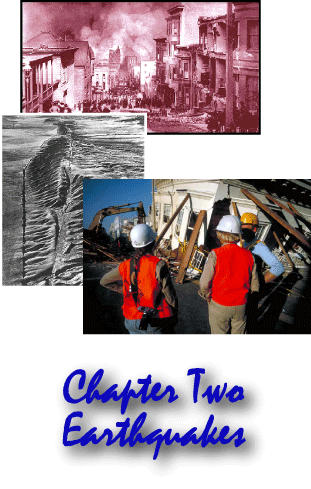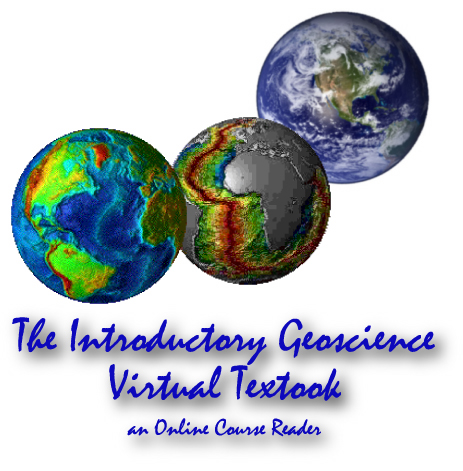
Editor's Note
One of
the most awesome spectacles in nature is a large magnitude
earthquake. These destructive events have the power to crumble
the ediffices of our civilization and in ancient times to mark the
demise of civilizations themselves. The rumblings of the earth
give testimony to the tremendous forces that move continents, alter
coastlines and build mountains. Moreover, earthquakes offer a
window into the inner workings of the planet and give insight into its
architecture and its dynamic processes.
The Chapter is presented in three parts. The first by Shedlock and Pakiser pesents the topic in a broad and general way. The second reading is a short, general online publication from the U.S.G.S. that describes the differences between magnitude and intesity in some detail. Part III, by Schulz and Wallace offers a good overview of the San Andreas fault, which has been responsible for two large earthquakes in recent American history. By bringing the reader from the general to the specific this chapter offers a good lens for investigating the inner workings of earthquakes.
The Chapter is presented in three parts. The first by Shedlock and Pakiser pesents the topic in a broad and general way. The second reading is a short, general online publication from the U.S.G.S. that describes the differences between magnitude and intesity in some detail. Part III, by Schulz and Wallace offers a good overview of the San Andreas fault, which has been responsible for two large earthquakes in recent American history. By bringing the reader from the general to the specific this chapter offers a good lens for investigating the inner workings of earthquakes.
PART I
Earthquakes
United States Geological Survey
online publication
by
Kaye M. Shedlock & Louis C. Pakiser
http://pubs.usgs.gov/gip/earthq1/
United States Geological Survey
online publication
by
Kaye M. Shedlock & Louis C. Pakiser
http://pubs.usgs.gov/gip/earthq1/
[ENTER] [Review this Resource]
PART II
The Severity of an Earthquake
United States Geological Survey
online publication
http://pubs.usgs.gov/gip/earthq4/severitygip.html
[ENTER] [Review this Resource]
PART III
The
San Andreas Fault
United States Geological Survey
online publication
by
Sandra S. Schulz and Robert E. Wallace
http://pubs.usgs.gov/gip/earthq3/index.html/
[ENTER] [Review this Resource]
United States Geological Survey
online publication
by
Sandra S. Schulz and Robert E. Wallace
http://pubs.usgs.gov/gip/earthq3/index.html/
[ENTER] [Review this Resource]
